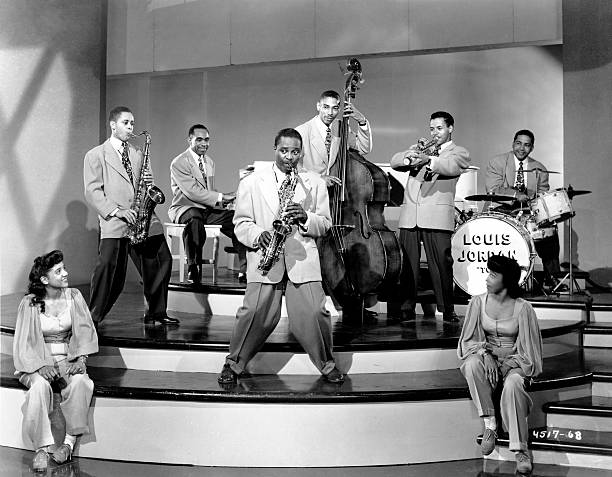The History of Rhythm and Blues
“R&B was known as being a way of expressing the joy of living and was music that was good to dance to.”
Louis Jordan, “The Father of Rhythm & Blues.
January 15, 2022
“Lizzo. Beyonce. The Weeknd. Khalid. Lil Nas X. Cardi B. Justin Bieber. Adele. What do these artists have in common? Their music is firmly rooted in rhythm and blues (R&B), a genre developed by Black artists in the 1940s. The rhythms came from African music and to this day continue to have an extreme influence on contemporary music. According to MasterClass.com, the defining characteristics of R&B are: strong overlap with rock music, guitar-based instrumentation, and inspiration from blues and church music.
Louis Jordan, a saxophone player and bandleader was known as “The Father of R&B,” which wasn’t officially a genre until Jerry Wexler of Billboard magazine used the term in 1949 to replace the term “Race Music.” Jordan combined African beats with swing jazz to create a new sound that burst with popularity. Mark Puryear of the Smithsonian Institution’s Center for Folklife & Cultural Heritage says, “R&B was known as being a way of expressing the joy of living and was music that was good to dance to.”
After the birth of R&B, its popularity not only swept the nation, but also influenced a later genre of popular music, Rock and Roll. Rock and Roll evolved over time, but still kept the rhythmical origins that started it. Not only was R&B popular and influential, it also symbolized a shift in the culture of America. During the 1960s, when our nation was sorely divided by civil rights issues, the Vietnam War, and the fracture of the Democratic party, R&B had a large part in bringing people together.
Not only can we enjoy the beauty of rhythm and blues, we can appreciate how it has influenced culture and music forever.





